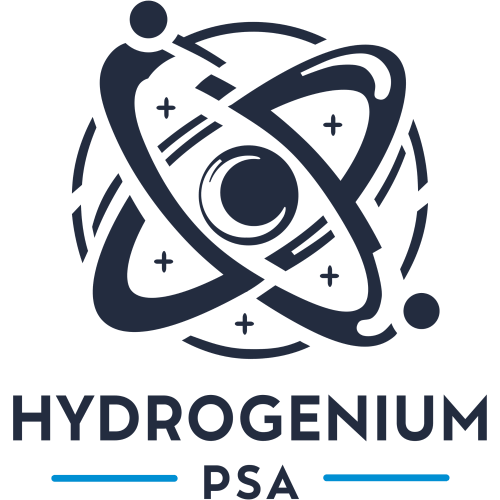Hydrogenium
Creators of
Modern
Technology
Revolutionary Biomass
Conversion System
for Green Hydrogen
Our team of experts is committed to delivering innovative solutions that promote sustainable development and reduce carbon dioxide emissions.
01
Clean synthesis gas obtained from biomass gasification in a plasma environment is subjected to chemical synthesis processes in compact reactors.
02
Subsequent steps include CO2 separation for further industrial use through vacuum adsorption and hydrogen purification to 99.9999% using compact PSA technology.
03
The resulting gaseous hydrogen is compressed to high pressures and transferred to dedicated Type IV storage tanks.
The current global energy and economic crisis prompts reflection on the necessity of energy source diversification and opens new perspectives for green and sustainable solutions.
In the context of the European Union's ambitious goals, which plan to import 10 million tons (Mt) of green hydrogen and its derivatives by 2030, building and launching new green hydrogen and methanol production units becomes one of the most attractive business projects.
Over two years of work and analysis in the country and worldwide has allowed our company to identify the best technological and economic solution for biomass conversion into synthesis gas suitable for green hydrogen production.
The reactor’s operation is based on the principle of gasification using steam-water plasma with oxygen. The application of a plasma stream enables increasing the process temperature, physical and chemical transformation rates, raw material conversion degree, gas residence time in the reaction volume, hydrogen and carbon monoxide content in synthesis gas, thermal intensity of the reaction volume, and specific efficiency.
Building an integrated green hydrogen production platform allows the application of plasma processes in bio-hydrogen production and opens the possibility of replacing fossil fuels with an environmentally friendly energy source from biomass.
Plasma Biomass Processing
The applied plasma biomass processing method using a non-electrode plasmatron will generate high-efficiency synthesis gas with high hydrogen content. We can use practically any biomass containing carbon compounds for production.
Our technology has several competitive advantages over hydrogen production by electrolyzers:
- No dependency on electrolyzer availability Currently, waiting time for a 1 MW electrolyzer delivery is 2-3 years. The larger the electrolyzer capacity, the longer the delivery wait time.
- No dependency on obtaining rare earth elements, which are 80% processed in China Indirectly supporting China's economy.
- Components for plasma reactor production will be manufactured entirely in Poland
- Hydrogen production from our reactor is multiple times less energy-intensive than water electrolysis
- The built-in carbon dioxide separation system allows for paid atmospheric CO2 sequestration
Green hydrogen can revolutionize various sectors, including transportation, industry, and energy storage. As an energy carrier, it can be used in fuel cells to generate electricity, potentially replacing fossil fuel use in vehicles.
Not only does this eliminate harmful greenhouse gas emissions, but it also reduces our dependence on limited fossil fuel resources. Moreover, green hydrogen can play a significant role in industrial processes.
Industries such as steel, fertilizer, and petrochemical, which traditionally relied on high-emission methods, can now adopt green hydrogen as a clean alternative. In this way, they can reduce their carbon footprint and contribute to a more sustainable future.
One of the main advantages of green hydrogen is its versatility. It can be easily stored and transported using high-pressure Type IV tanks, offering a reliable and efficient energy storage solution for both small and large scales.
However, scaling up green hydrogen production requires addressing certain challenges. The cost of plasma conversion is currently a key factor compared to conventional hydrogen production.
Furthermore, expanding renewable energy infrastructure is crucial to generate sufficient electricity for green hydrogen production. Collaboration between governments, scientists, and industry is essential to overcome these obstacles and realize the full potential of green hydrogen.
